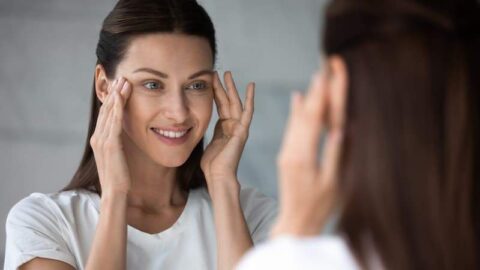What is Microcannula?
A huge reason people avoid getting facial fillers is the fear that the needles used to inject the treatment will be too uncomfortable. Luckily we have microcannula. To make injection treatments less painful, physicians have devised a technique that takes the complexities out of facial filler procedures.
Essentially, microcannula is an updated version of the traditional hypodermic needles used to administer injection treatments. Rather than having a sharp tip, this method uses a blunt end that makes your injection treatment much more comfortable. It’s has a flexible shaft, allowing it to move quickly compared to the stiffness of a traditional needle.

INJECTIONS YOUR PATIENTS WILL LOVE! CODE “20OFF” TAKES 20% OFF YOUR FIRST ORDER!
Microcannulas are a tool that every great injector must master. Patients want quick results with no downtime. Our microcannulas are high quality and a fraction of the price of our competitors!
You can create an account here.
What are the benefits of Microcannula?
- More Precious Maneuverability: A doctor will be able to perform the procedure more quickly and with minimal pain thanks to the advance maneuverability to avoid certain areas.
- Minimal Risk of Damage: Conventional hypodermic sharp needles can damage small blood vessels, while this method all but cancels this risk.
- Less Downtime: There is typically only one insertion site when using microcannula, patients won’t have to spend as much time recovering.
- Less Tissue Damage: Patients often experience less bruising when using this method. This brings an added level of relaxation to patients knowing they won’t have as much bruising.
- New Collagen: The design of microcannula is intended to stimulate the creation of fresh collagen to improve your facial volume.
- Fewer Side Effects: When facial injections are delivered using this method, patients are less likely to encounter side effects.
At the FaceMed store, you can find 18,22,25,27, and 30 size gauge microcannulas at various lengths. We sell high-quality microcannulas that will perform any filler injection task you need. The results show that microcannula injections are the future.
What Does a Procedure Look Like?
Maybe you have decided to get fillers, and now the question is what sort of fillers do you need. As the mid-face ages, it begins to sag because the skin gets a little looser, and the tissue has less support. This would be a sign that you’re the right candidate for facial fillers to lift the sag and create a more youthful, renewed look. What’s next? You make your appointment and then schedule your procedure.
The physician first makes a small entry point in your skin using a fine needle. This is a crucial step since the Microcannula has a blunt tip and is unable to pierce into the skin on its own. The entry spot is very shallow and does not cause much pain or bleeding for patients.
Then the doctor carefully inserts the Microcannula through the little opening they created with a sharp needle.
The doctor then guides it under your skin to the sites of the intended injection. Along the way, the Microcannula gently slides through the between the tissues. The needle can be moved under the skin without causing any damage to the tissues and the patient most often do not feel any pain, only pressure, as the doctor moves it under their skin.
If a doctor was to fill under a patient’s eyes, they make a small hole either next to the lip or over the cheekbone and move the needle in and up your cheek, under the skin. I know, it sounds scary, but because the one hole is the only site of injection, it closes within two hours and hurts less because it’s anesthetized.
-
 23 gauge 50 mm (2 inch) Microcannulas
23 gauge 50 mm (2 inch) Microcannulas -
 22 Gauge 100 mm (4 inch) Microcannulas.
22 Gauge 100 mm (4 inch) Microcannulas. -
 27 Gauge 38 mm (1.5 inch) Microcannulas
27 Gauge 38 mm (1.5 inch) Microcannulas -
 25 Gauge 38 mm (1.5 inch) Microcannulas
25 Gauge 38 mm (1.5 inch) Microcannulas -
 30 Gauge 25 mm (1 inch) Microcannulas
30 Gauge 25 mm (1 inch) Microcannulas -
 18 Gauge 100 mm (4 inch) Microcannulas
18 Gauge 100 mm (4 inch) Microcannulas -
 25 Gauge 50 mm (2 inch) Microcannulas
25 Gauge 50 mm (2 inch) Microcannulas -
 21 Gauge 50 mm (2 inch) Microcannulas
21 Gauge 50 mm (2 inch) Microcannulas -
 21 Gauge 70 mm (2.75 inch) Microcannulas
21 Gauge 70 mm (2.75 inch) Microcannulas







